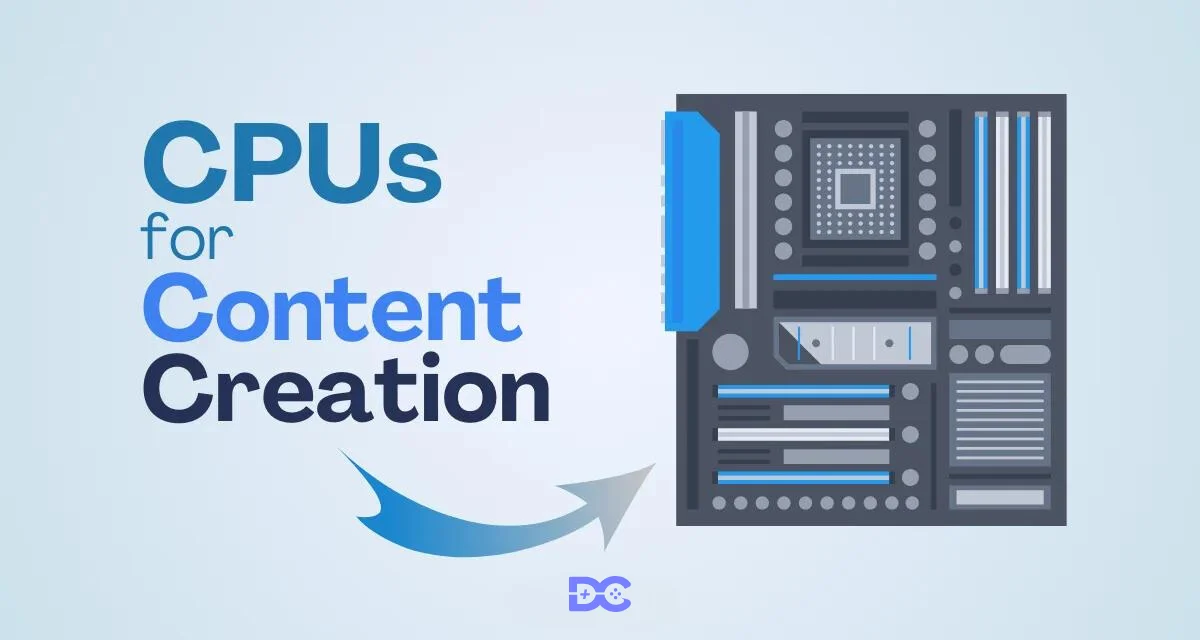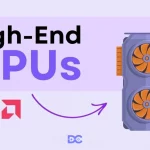As we know, Content creation is a vast and fast-changing field that encompasses everything from video editing and graphic design to music production and 3D modeling. As such, the hardware requirements for content creators can vary widely depending on the specific tasks they’re undertaking. Here comes the role of CPUs for Content Creation.
However, some general principles apply to all content creation workflows: you need a powerful CPU, plenty of RAM, and a fast storage solution.
In this article, we’ll examine the best CPUs for content creation in 2025. We’ll consider factors like core count, clock speed, and cache size to help you choose the suitable processor.
Evolution of CPUs for Content Creation in 2025

Advances in technology shaping CPU performance
In 2025, CPUs have undergone significant advancements propelled by cutting-edge technologies. These innovations play a pivotal role in enhancing overall CPU performance, catering specifically to the intricate needs of content creators.
Increased Core Counts: Modern CPUs boast higher core counts compared to their predecessors. More cores mean the processor can handle multiple tasks simultaneously, a crucial aspect for content creation workflows that often involve resource-intensive applications.
Optimized Architecture: The architectural improvements in CPUs contribute to more efficient data calculations and improved overall performance, translating to quicker rendering times for content creators.
Enhanced Multi-Threading: Content creation tasks often benefit from multi-threading capabilities. CPUs in 2025 are designed to excel in multi-threading applications, ensuring smoother execution of tasks like video rendering, 3D modeling, and graphic design.
Key Features Content Creators Should Look For
Content creators have unique demands, requiring CPUs that can handle diverse and complex tasks. Graphic designers should especially look for CPUs with powerful GPU integration to ensure seamless rendering and handling of high-resolution visuals.
- GPU Integration: Graphic Processing Units (GPUs) integrated into CPUs play a vital role in graphics-intensive tasks. Content creators, especially graphic designers, should look for CPUs with powerful GPU integration to ensure seamless rendering and handling of high-resolution visuals.
- Efficient Cache Management: Efficient cache utilization is essential for quick access to frequently used data. CPUs with smart cache management systems enhance overall performance by reducing data retrieval times, a significant advantage for content creation applications.
- Multi-Threaded Performance: Content creation often involves running multiple applications simultaneously, so a times, which ability to manage threads efficiently is crucial. CPUs with strong multi-threading capabilities can easily handle multitasking scenarios, improving workflow efficiency.
- Compatibility with Emerging technologies: Future-proofing is a crucial consideration. Content creators should opt for CPUs that support emerging technologies like DDR5 RAM and PCle 5.0. This ensures that their systems remain relevant and capable of handling advancements in content creation software.
The Best CPUs for Content Creation in 2025
Intel Core i9-14900K
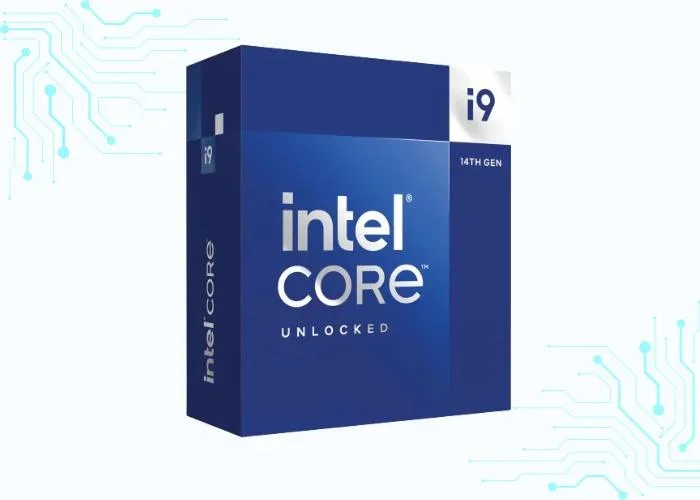
The Intel Core i9-14900K is a powerful processor that can handle any content-creation task you throw at it. However, its high cost and power consumption make it a less attractive option for casual users or those on a budget.
If you’re a serious content creator who needs the best possible performance, the i9-14900K is a great choice. But if you’re just looking for a processor that can handle basic tasks like photo editing and light video editing, you may be better off with a less expensive option.
| Feature | Specification |
|---|---|
| Launch Date | Q4’23 |
| Integrated GPU | Intel® UHD Graphics 770 |
| Clockspeed (Base) | 3.2 GHz |
| Clockspeed (Max, Boost) | 5.8 GHz |
| Lithography | 10 nm |
| Max Power | 253 W |
| Memory | Up to DDR5 5600 MT/s and Up to DDR4 3200 MT/s |
| Cores and Threads | 24 cores and 32 Threads |
| L3 Cache | 36 MB |
| Socket | FCLGA1700 |
Intel Core i9-13900KS
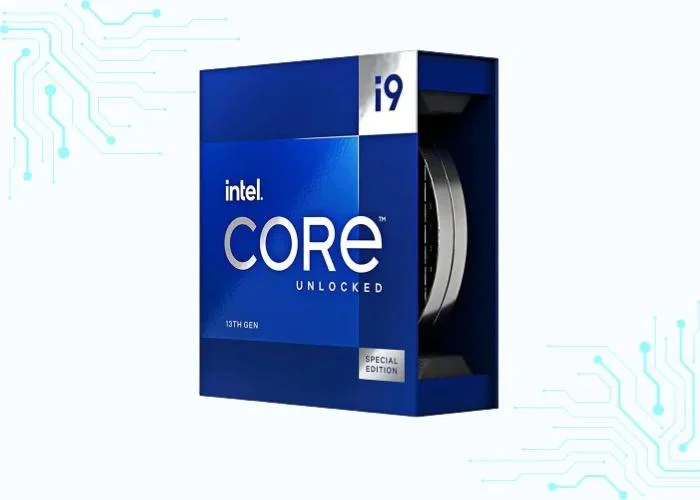
The Intel Core i9-13900KS, launched in 2023, is a premier processor for content creators who perform demanding tasks like video editing and 3D rendering.
Renowned for its power, it comes with a hefty price tag, ranking among the market’s costliest. Adequate cooling is imperative due to its substantial heat generation. For users engaged in light editing, a more affordable processor might be a prudent choice.
Considerations include software demands, budget constraints, and task requirements. While the i9-13900KS boasts unmatched performance, prospective buyers must weigh its benefits against costs and cooling needs, ensuring alignment with their specific usage scenarios.
| Feature | Specification |
|---|---|
| Launch Date | Q1’23 |
| Integrated GPU | Intel® UHD Graphics 770 |
| Clockspeed (Base) | 3.2 GHz |
| Clockspeed (Max, Boost) | 6.0 GHz |
| Lithography | 7 nm |
| Max Power | 235 W |
| Memory | Up to DDR5 5600 MT/s and Up to DDR4 3200 MT/s |
| Cores and Threads | 24 cores and 32 Threads |
| L3 Cache | 36 MB |
| Socket | FCLGA1700 |
Intel Core i7-14700KF
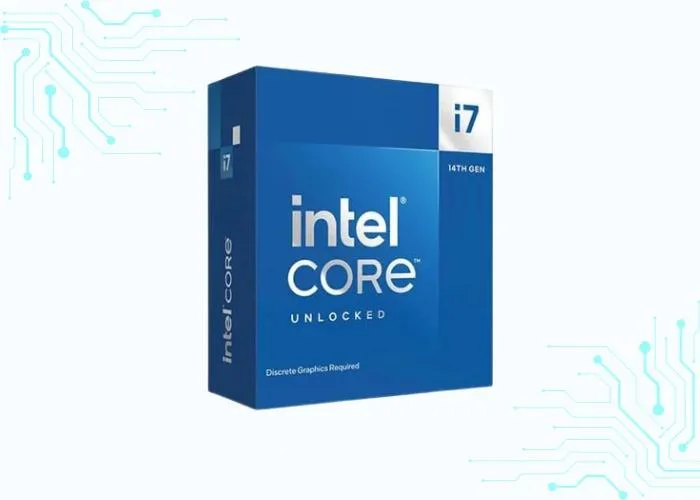
The Intel Core i7-14700KF, a potent 14th-gen desktop processor released in late 2023, caters to content creation with a focus on efficient writing. While not as extreme as the i9-13900KS, it excels in handling demanding writing applications, ensuring smooth document editing, fast multitasking, and efficient processing of large documents.
Supporting DDR5 and PCIe 5.0, it offers a future-proof platform. However, it may be overkill for basic writing needs, demands a robust power supply due to high consumption, and as an unlocked processor, offers overclocking potential but requires expertise.
For serious content creators prioritizing high performance, the i7-14700KF proves excellent, but those on a budget or with simpler writing tasks might find a less powerful CPU more suitable.
| Feature | Specification |
|---|---|
| Launch Date | Q4’23 |
| Integrated GPU | Does not have integrated graphics |
| Clockspeed (Base) | 3.2 GHz |
| Clockspeed (Max, Boost) | 5.6 GHz |
| Lithography | 10 nm |
| Max Power | 253 W |
| Memory | Up to DDR5 5600 MT/s and Up to DDR4 3200 MT/s |
| Cores and Threads | 20 cores and 28 Threads |
| L3 Cache | 33 MB |
| Socket | FCLGA1700 |
Intel Core i9-13900K
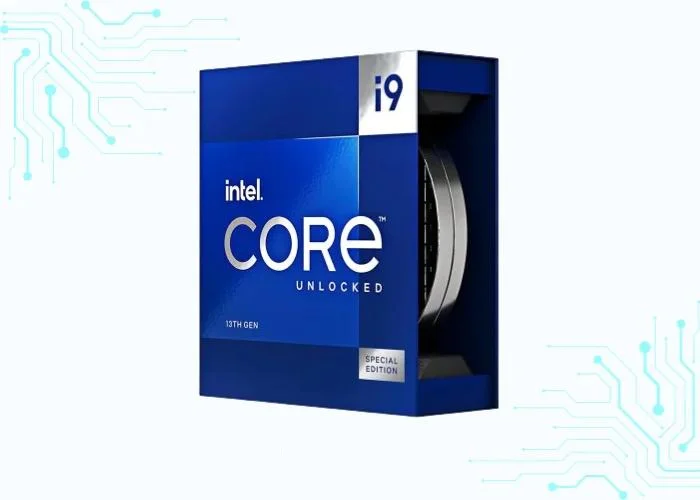
The Intel Core i9-13900K, a powerful desktop processor, stands out as a content creation powerhouse, excelling in video editing, 3D rendering, and live streaming.
Offering accelerated video editing, smooth 3D rendering, and seamless multitasking, it caters to professionals and serious hobbyists.
However, its stellar performance comes with drawbacks—a steep price tag that may deter budget-conscious users and substantial power consumption, wanting a robust power supply and cooling setup.
While optimal for demanding workflows, its cost and power requirements may render it less ideal for users with budget constraints or simpler creative needs, urging careful consideration before purchase.
| Feature | Specification |
|---|---|
| Launch Date | Q4’22 |
| Integrated GPU | Intel® UHD Graphics 770 |
| Clockspeed (Base) | 3.0 GHz |
| Clockspeed (Max, Boost) | 5.8 GHz |
| Lithography | 7 nm |
| Max Power | 253 W |
| Memory | Up to DDR5 5600 MT/s and Up to DDR4 3200 MT/s |
| Cores and Threads | 24 cores and 32 Threads |
| L3 Cache | 36 MB |
| Socket | FCLGA1700 |
Intel Core i7-13700K
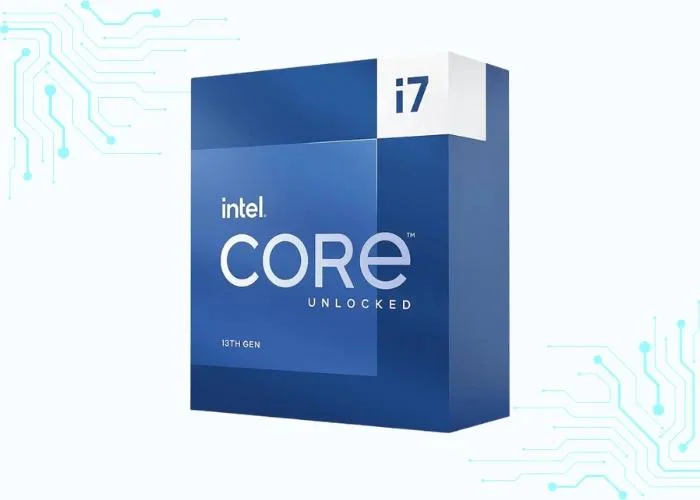
Released in 2023, the Intel Core i7-13700K, a robust 13th-gen desktop processor, offers commendable performance for content creation tasks such as video editing, 3D rendering, and live streaming.
While slightly less extreme than the i9-13900K, it impressively accelerates video editing and rendering, ensures smooth 3D rendering, seamless live streaming, and excellent multitasking.
However, it falls short in comparison to the i9-13900K’s extreme capabilities, and like its counterpart, it demands a robust power supply and cooling due to high power consumption.
Well-suited for content creators on a budget, the i7-13700K strikes a favorable balance between performance, price, and power efficiency but may be overkill for basic tasks.
| Feature | Specification |
|---|---|
| Launch Date | Q4’22 |
| Integrated GPU | Intel® UHD Graphics 770 |
| Clockspeed (Base) | 3.4 GHz |
| Clockspeed (Max, Boost) | 5.4 GHz |
| Lithography | 7 nm |
| Max Power | 253 W |
| Memory | Up to DDR5 5600 MT/s and Up to DDR4 3200 MT/s |
| Cores and Threads | 16 Cores and 24 Thread |
| L3 Cache | 30 MB |
| Socket | FCLGA1700 |
Intel Core i5-14600KF

The Intel Core i5-14600KF, a 2023 mid-range release, strikes a commendable balance between performance and affordability for content creators. While not the top-tier choice, it adeptly handles light to moderate video editing, 3D rendering, photo editing, and live streaming, making it suitable for many creators.
Drawbacks include limitations with demanding workloads, a lower core count compared to higher-end CPUs, and the absence of integrated graphics, requiring a separate graphics card.
Positioned for beginners and those with moderate project demands or budget constraints, the i5-14600KF delivers decent performance for everyday creative tasks, offering a favorable balance of price and capabilities. Considerations for specific needs, budget constraints, and future upgradability should guide the decision-making process.
| Feature | Specification |
|---|---|
| Launch Date | Q4’23 |
| Integrated GPU | Does not have integrated graphics |
| Clockspeed (Base) | 3.5 GHz |
| Clockspeed (Max, Boost) | 5.3 GHz |
| Lithography | 10 nm |
| Max Power | 181 W |
| Memory | Up to DDR5 5600 MT/s and Up to DDR4 3200 MT/s |
| Cores and Threads | 14 Cores and 20 Threads |
| L3 Cache | 25 MB |
| Socket | FCLGA1700 |
Intel Core i5-13600K
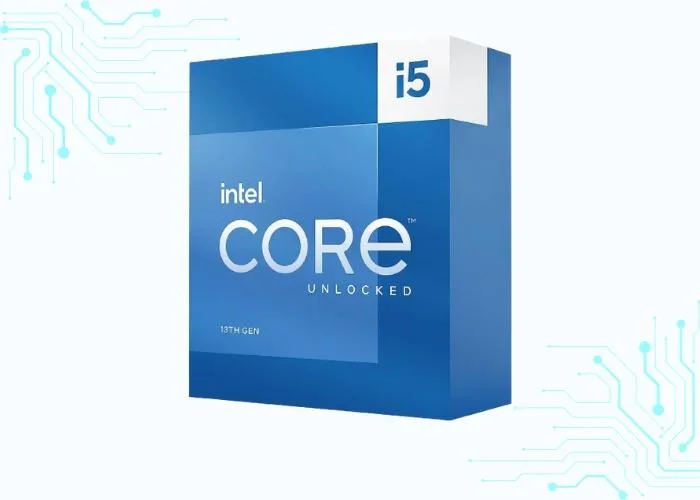
The Intel Core i5-13600K, unveiled in 2023, emerges as a potent mid-range processor for content creators who want to tackle video editing, 3D rendering, and live streaming without straining their budget.
Balancing performance, price, and power efficiency, it excels in expediting video editing and rendering, ensuring smooth 3D rendering, seamless live streaming, and efficient multitasking. While not as potent as the i7/i9 CPUs, it delivers a compelling performance.
Yet, like its counterparts, it exhibits high power consumption, necessitating a robust power supply and cooling. It may be overkill for basic tasks, suggesting budget-conscious users opt for a more economical CPU. Overall, the Intel Core i5-13600K offers a fantastic blend of power and affordability for content creators tackling demanding tasks.
| Feature | Specification |
|---|---|
| Launch Date | Q4’22 |
| Integrated GPU | Intel® UHD Graphics 770 |
| Clockspeed (Base) | 3.5 GHz |
| Clockspeed (Max, Boost) | 5.1 GHz |
| Lithography | 7 nm |
| Max Power | 181 W |
| Memory | Up to DDR5 5600 MT/s and Up to DDR4 3200 MT/s |
| Cores and Threads | 14 Cores and 20 Threads |
| L3 Cache | 24 MB |
| Socket | FCLGA1700 |
AMD Ryzen 9 7950X3D
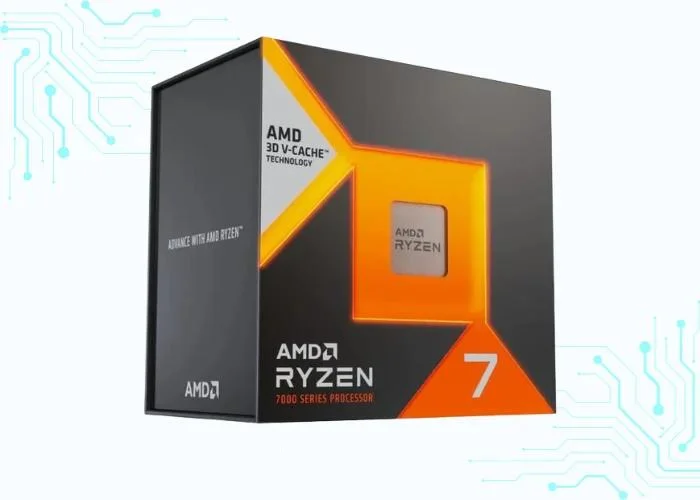
Released in 2023, the AMD Ryzen 9 7950X3D stands as a compelling processor for content creators, introducing 3D V-Cache technology with unique benefits and trade-offs compared to the conventional Ryzen 9 7950X.
The 3D V-Cache potentially enhances performance in cache-dependent applications, offering smoother multitasking and future-proof compatibility with DDR5 and PCIe 5.0.
However, lower clock speeds, limited benefits in various content creation apps, and a higher price tag pose drawbacks. Tailored for niche scenarios, it may not outshine the 7950X for general content creation.
Considerations encompass software needs, budget constraints, and alternatives like the Ryzen 7 7800X3D, providing similar 3D V-Cache benefits at a more affordable cost. The optimal choice depends on aligning features with specific requirements and budget constraints.
| Feature | Specification |
|---|---|
| Launch Date | 2/28/2023 |
| Integrated GPU | RDNA 2 |
| Clockspeed (Base) | 4.2 GHz |
| Clockspeed (Max, Boost) | 5.7 GHz |
| Lithography | 5 nm |
| Max Power | 162 W |
| Memory | (2x1R DDR5-5200, 2x2R DDR5-5200, 4x1R DDR5-3600, 4x2R DDR5-3600) |
| Cores and Threads | 16 Cores and 32 Threads |
| L3 Cache | 128 MB |
| Socket | AM5 |
Intel Core i9-12900KS
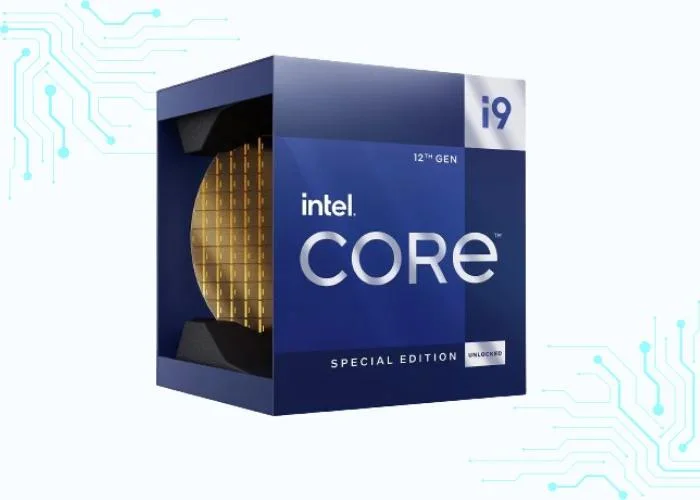
Released in 2022, the Intel Core i9-12900KS remains a potent choice for content creators, excelling in video editing, 3D rendering, and multitasking. Despite newer alternatives, the i9-12900KS delivers faster performance and smooth workflows.
However, drawbacks include a high price tag and substantial power consumption, potentially making it overkill for basic tasks. Ideal for professionals and serious hobbyists, it offers top-tier multitasking capabilities.
Considerations involve specific content creation needs, budget constraints, and newer options like the i7-13700K for moderate workloads or advanced choices like the i9-13900K and Ryzen 9 7950X—future-proofing factors in newer platforms supporting DDR5 and PCIe 5.0 for potential upgrades.
| Features | Specification |
|---|---|
| Launch Date | October 2022 |
| Integrated GPU | Intel Xe Graphics (No iGPU on K models) |
| Clockspeed (Base) | 3.4 GHz |
| Clockspeed (Max, Boost) | 5.5 GHz (Boost) |
| Lithography | 10nm SuperFin |
| Max Power | 250 Watts |
| Memory | DDR5-6400, DDR4-6400 |
| Cores and Threads | 16 Cores, 24 Threads |
| L3 Cache | 30 MB |
| Socket | LGA 1700 |
AMD Ryzen 7 7800X3D
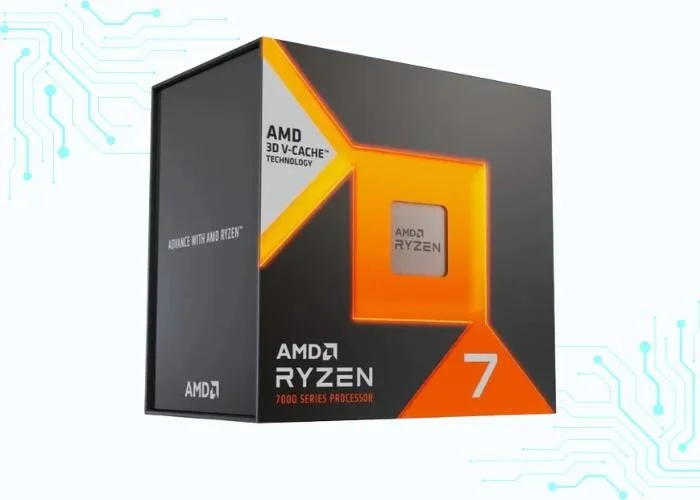
Launched in late 2023, the AMD Ryzen 7 7800X3D is a compelling processor designed to meet the demands of content creation and gaming. Notable for its 3D V-Cache technology, it potentially enhances performance in specific content creation applications.
Boasting 8 cores, it facilitates efficient multitasking and ensures future-proof compatibility with DDR5 and PCIe 5.0. However, drawbacks include lower clock speeds compared to the 7800X, limited benefits in certain content creation apps, and a higher price tag.
Excelling in scenarios reliant on a large L3 cache, its appeal diminishes for general content creation tasks compared to the conventional 7800X. Considerations involve specific software needs, budget constraints, and alternative options like the Ryzen 9 7950X3D for a more powerful albeit pricier choice or the budget-friendly Ryzen 7 5800X3D from the previous generation.
Ultimately, the best choice depends on aligning the processor’s features with individual requirements and budget considerations.
| Feature | Specification |
|---|---|
| Launch Date | 4/6/2023 |
| Integrated GPU | RDNA 2 |
| Clockspeed (Base) | 4.2 GHz |
| Clockspeed (Max, Boost) | 5 GHz |
| Lithography | 5 nm |
| Max Power | 80 W |
| Memory | 2 x 1R – DDR5-5200 2 x 2R – DDR5-5200 4 x 1R – DDR5-3600 4 x 2R – DDR5-3600 |
| Cores and Threads | 8 Cores and 16 Threads |
| L3 Cache | 96 MB |
| Socket | AM5 |
Considerations for A Video Editing Ready CPU

Video editing is a resource-intensive process, requiring CPUs with specialized capabilities to handle tasks like rendering, transcoding, and real-time playback smoothly. In 2025, CPUs optimized for video editing tasks will become known as Video Editing Powerhouse.
- Raw Processing Power: These CPUs prioritize raw processing power, enabling swift handling of large video files, applying complex effects, and managing multiple video players without compromising performance.
- Optimized Architecture: Their architecture is fine-tuned for video editing workflows, featuring efficient data pathways and optimized instructions. This results in quicker video processing, reducing rendering times and enhancing overall editing efficiency.
- Quick Transcoding: They excel in quick transcoding, facilitating seamless conversion of video files from one format to another, essential for working with diverse video formats.
- Benchmark Performance: Video editing benchmarks assess CPU performance in rendering, effects application, and playback. Keeping an eye on benchmark scores helps gauge CPU performance in video editing scenarios.
- User Review: Real-world user experiences provide valuable insights into stability, compatibility with editing software, and overall satisfaction. Positive user reviews instill confidence in a CPU choice, indicating it meets practical video editing needs.
- Comparative Analysis: Comparing benchmark performance and user reviews aids in making informed decisions based on specific editing requirements. Factors like rendering speed, responsiveness, and handling of high-resolution footage should be considered in this analysis.
CPUs with more Core and Threads for Multitasking
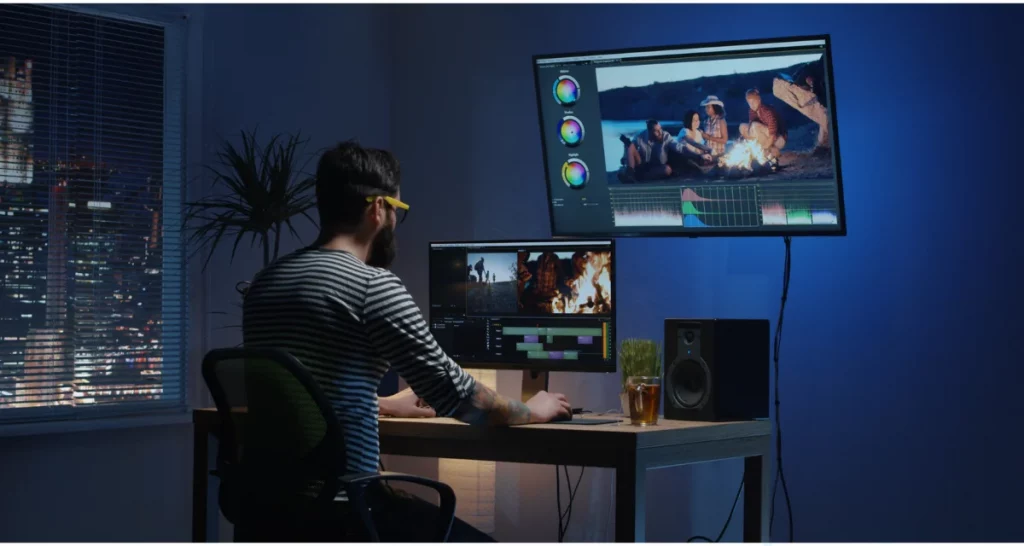
Multitasking refers to a CPU’s ability to efficiently handle and execute multiple tasks simultaneously. In 2025, CPUs with high core and thread counts are referred to as Multitasking Marvels due to their prowess in managing numerous concurrent tasks.
- Abundance of Cores: These CPUs feature a significant number of cores, allowing them to execute multiple tasks independently. More cores will enable the CPU to divide its workload effectively, resulting in improved multitasking capabilities.
- Thread Count Optimization: Alongside high core counts, these CPUs also boast a substantial number of threads. Threads enable parallel processing within each core, further enhancing the CPU’s ability to handle multiple threads of execution simultaneously.
- Efficient Resources Allocation: Multitasking Marvels excel in allocating resources dynamically, ensuring that each task receives the necessary processing power. This efficient resource allocation prevents bottlenecks and slowdowns, even when running resource-intensive applications concurrently.
Risks and Benefits of Overclocking CPUs
Benefits of Overclocking:
- Improved Performance: The primary benefit is the potential for increased processing speed, leading to improved overall system performance.
- Cost-Effective Upgrades: Overclocking can offer a cost-effective way to enhance the system’s performance without having to invest in a new, more powerful CPU.
Risks of Overclocking:
- Stability Issues: Overclocking may lead to system instability if not done carefully. Unstable systems can result in crashes or data loss.
- Heat Generation: Overclocking increases the heat generated by the CPU. Without proper cooling solutions, this can lead to overheating and potential damage to the processor.
- Voiding Warranty: Overclocking often voids the warranty of the CPU, as it involves operating the processor outside the manufacturer’s recommended specifications.
FAQs
Are these CPUs suitable for gaming as well?
While primarily focused on content creation, many of the recommended CPUs also excel in gaming tasks.
Do I need a dedicated graphics card alongside these CPUs?
The need for a dedicated GPU depends on the nature of your content creation tasks. Some CPUs have integrated graphics, but a dedicated GPU can enhance performance.
What software is compatible with these CPUs?
The recommended CPUs are compatible with popular content creation software like Adobe Creative Suite, DaVinci Resolve, and Ableton Live.
Can I upgrade my existing CPU to one of the recommended models?
The feasibility of an upgrade depends on your current system’s compatibility. Check your motherboard specifications and power supply before upgrading.
How do these CPUs contribute to energy efficiency?
Some CPUs are designed with power efficiency in mind, contributing to energy savings. Check the specifications for information on power consumption.
Are AMD or Intel CPUs better for content creation?
It depends on the specific tasks. AMD often excels in multi-threaded applications, while Intel may have advantages in single-threaded performance. The choice should be based on the content creator’s particular needs and preferences.
What is the significance of high core and thread counts in CPUs for content creation?
High core and thread counts enhance a CPU’s multitasking capabilities, allowing content creators to handle multiple resource-intensive tasks simultaneously. This is crucial for efficient workflows in content creation, such as video editing, rendering, and graphic design.
Conclusion
In conclusion, when picking the best CPUs for making videos and graphics in 2025, you have to understand some fancy tech.
The newer CPUs have more cores and unique designs, making them great for jobs like graphic design and video editing. There are different options for different creative needs, whether you’re into editing videos or doing lots of things at once.
It’s essential to think about the cost, how “future-proof” it is, and how easy it is to use for both experts and beginners. Some people might want to overclock, but that comes with risks.
Checking what others say and looking at real-world examples can help creators make smart choices for their creative work.
